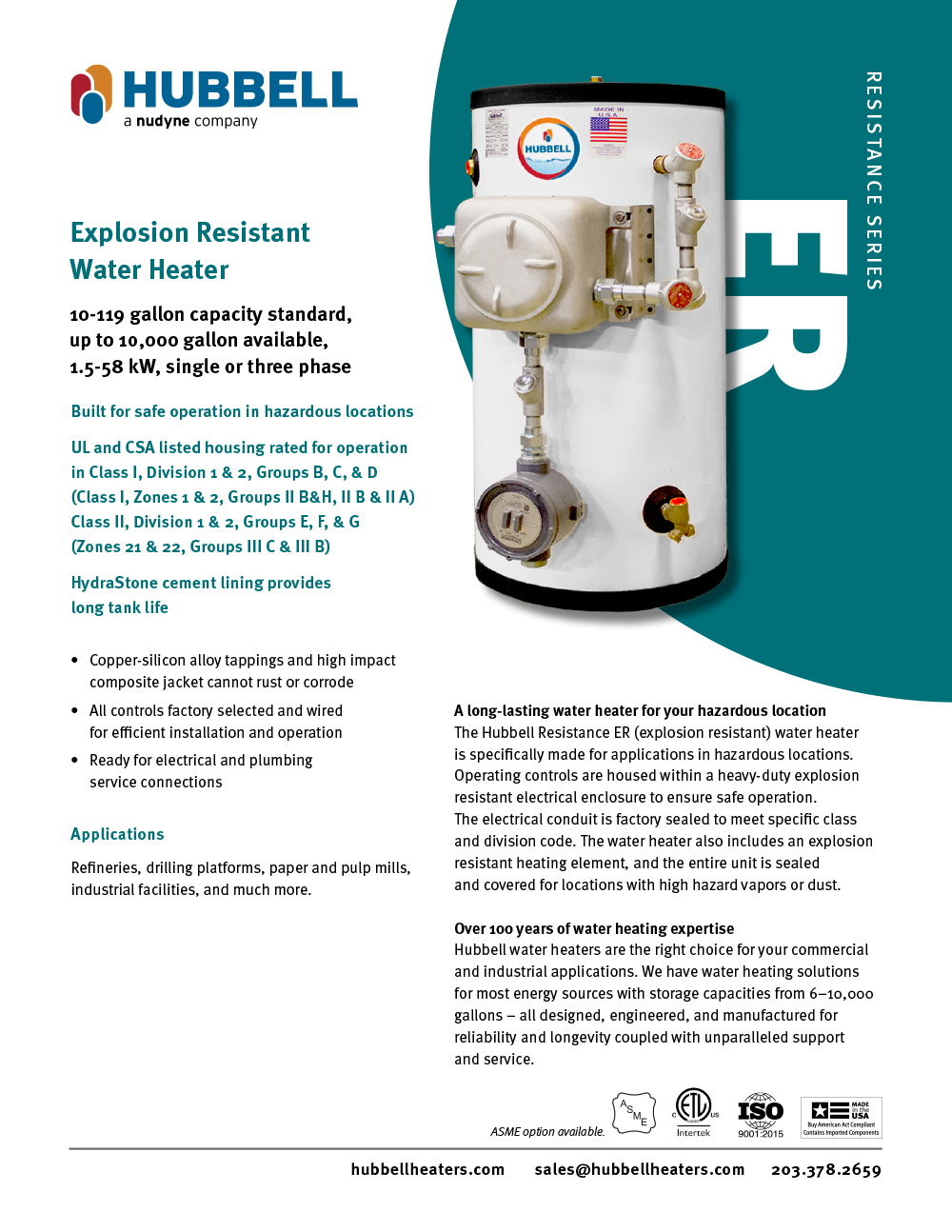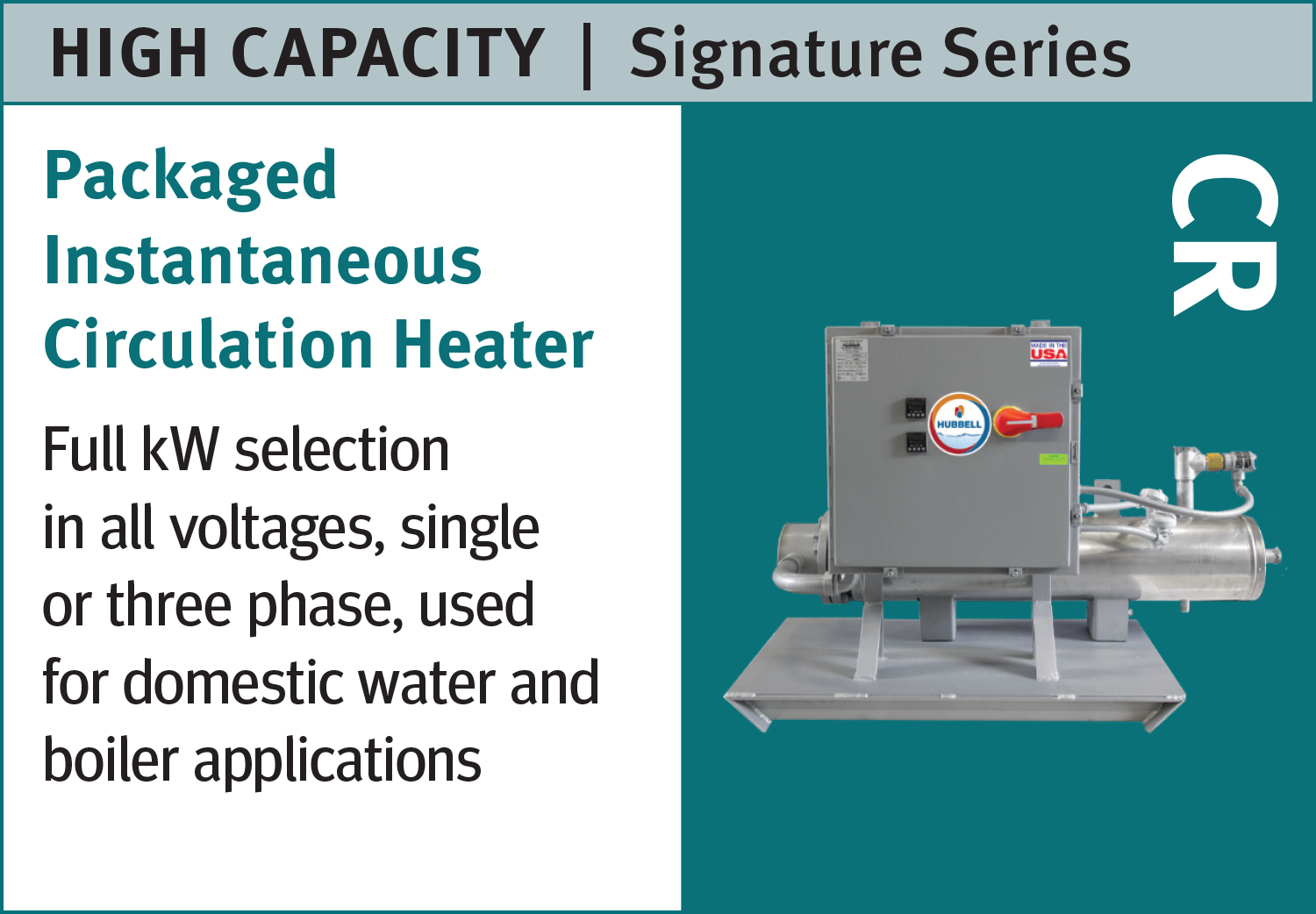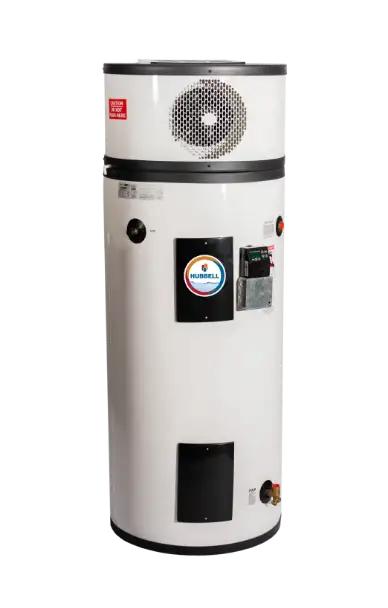Resistance Series
ER
Explosion Resistant Water Heater
10–119 gallon capacity, 1.5–58 kW, single phase or three phase voltages

HEAVY DUTY CONSTRUCTION
HYDRASTONE™ CEMENT LINING
SEALED HEATING ELEMENT
CLASS 1, DIV 2 READY
FACTORY SELECTED CONTROLS
Applications
Refineries, drilling platforms, paper and pulp mills, industrial facilities, and much more.
Resistance Series
ER
Explosion Resistant Water Heater
10–119 gallon capacity, 1.5–58 kW, single phase or three phase voltages
HEAVY DUTY CONSTRUCTION
HYDRASTONE™ CEMENT LINING
SEALED HEATING ELEMENT
CLASS 1, DIV 2 READY
FACTORY SELECTED CONTROLS
Applications
Refineries, drilling platforms, paper and pulp mills, industrial facilities, and much more.
ER Overview
Technical Documents
Request Info about the ER
You might also be interested in ...
Hubbell has a water heater for almost every application. Take a look at other options.









